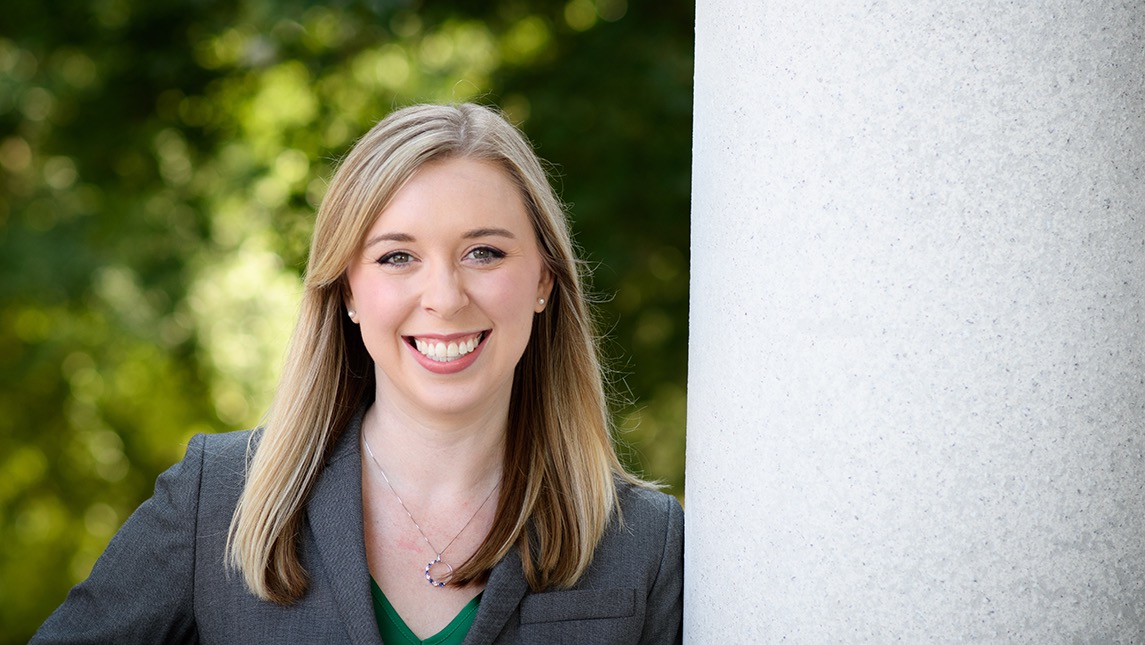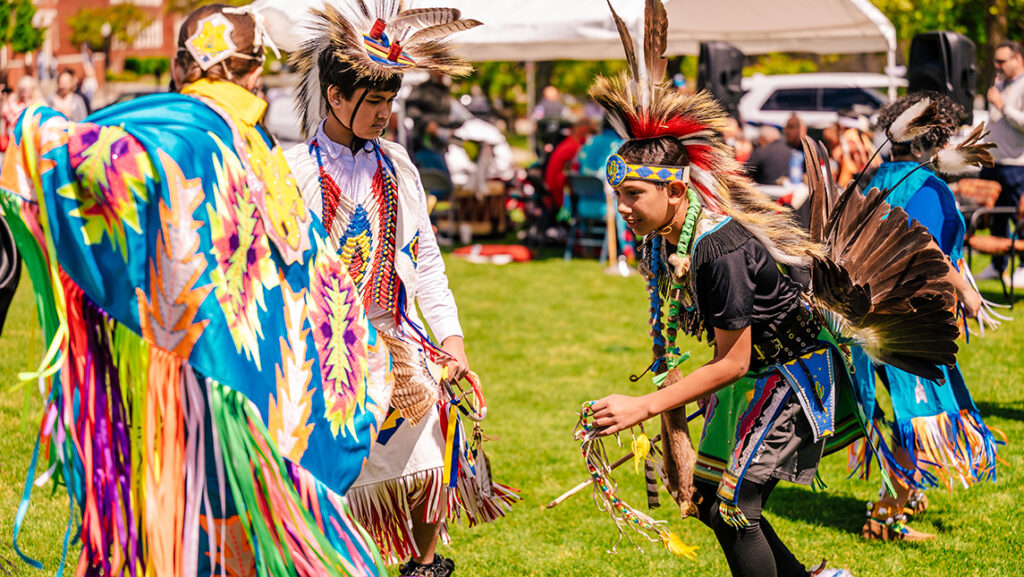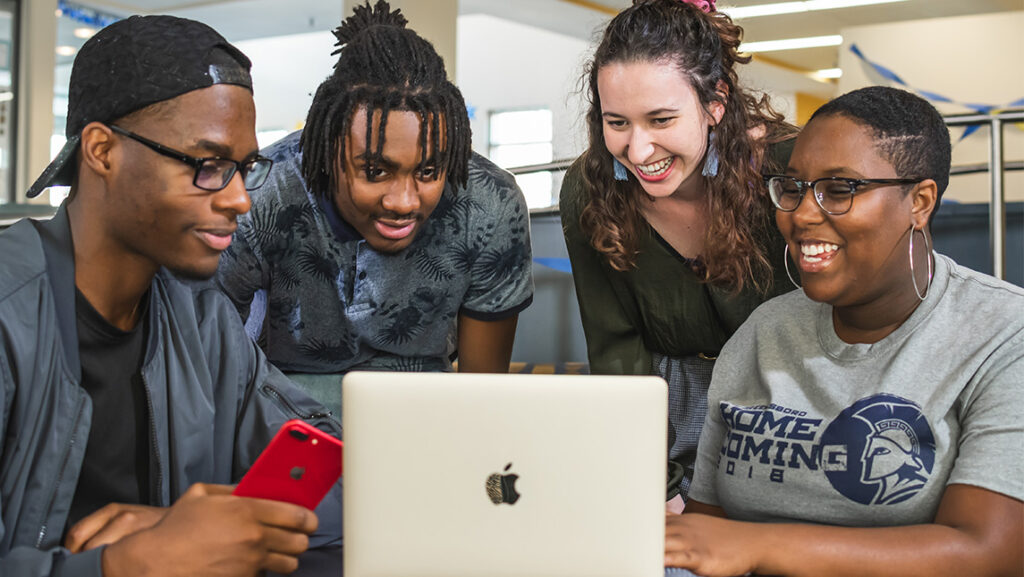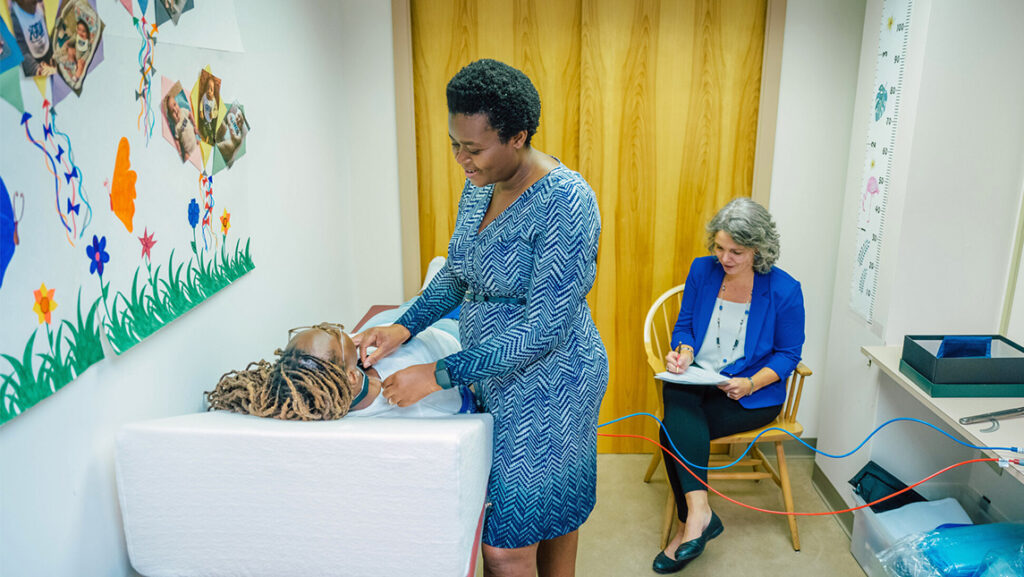
A century ago this month, the 19th Amendment to the Constitution was passed, guaranteeing and protecting women’s right to vote.
On August 18, 1920, after a nearly 100-year long fight, Tennessee became the 36th and final state approval needed to ratify the amendment.
How far have women’s rights come since then? How has the activism of the suffragists inspired the activism we see today?
Dr. Mandy Cooper, a historian and a lecturer of women’s history at UNC Greensboro, answers these questions in the Q&A below.
When did the fight for women’s suffrage begin?
Most people date the beginning of the women’s suffrage movement as the 1848 Seneca Falls Convention, but the call for women’s suffrage actually began with the beginning of the United States itself. For example, in First Lady Abigail Adams’s famous “Remember the Ladies” letter to her husband, President John Adams, during the American Revolution, she warned that women would “foment” a rebellion if they did not have representation. Also, in New Jersey, propertied white women could actually vote until 1807. So there were these calls for women’s suffrage earlier that the Seneca Falls Convention, although Seneca Falls was the first women’s rights convention in the U.S.
What did this activism look like? How did these suffragettes get their voices heard?
For these activists to be taken seriously, they had to serve other political agendas a lot of the time. The idea of women having more of a moral ground to stand on actually has a long history and began at least back to the post-revolutionary period. Pushing their domestication actually gave them a voice – emphasizing that they are women and they should have a say over this moral, maternal commonwealth.
By the time we get to the ratification of the 15th Amendment, there’s a split in the national suffrage movement with the question of whether the 15th Amendment should only focus on Black male suffrage or if it should focus on universal suffrage. So, many of these women activists align themselves with white supremacist politics in order to put forth their cause and get ahead with the argument that women themselves should be enfranchised because the white man’s democracy of the antebellum years had now been replaced by an aristocracy of sex. They also would argue that nationalizing citizenship for all people and protecting all rights of citizens through the 14th and 15th Amendments meant women – especially white women – should have the right to vote. Ultimately, this strategy falls apart, and there’s a deadlock in the late nineteenth century after the 15th Amendment is passed. With the national movement for women’s suffrage broken, activists start fighting for voting rights on a state-by-state basis.
Where did Black women activists fit in this movement?
The popular view of the women’s suffrage movement is often focused on white, middle-class women, but African American women were essential to it. The difference is that for African American women, women’s right to vote was not the end-all, be-all of their campaign. It was just a piece of their much larger campaign for rights for their communities.
One of my favorite accounts from the movement is of Ida B. Wells during the 1913 suffrage parade in Washington, D.C. Trying to avoid the race issue and not make many white southern suffragists angry, Alice Paul said that African American women could march, but they had to march in the back of the group. Ida B. Wells refused to do so, and instead, she marched with her state delegation right in the middle.
These African American women activists weren’t just fighting for a vote. It was important to them, but the lives, the rights, and the safety of their communities were more important to them. Some African American women did vote after the 19th Amendment was passed, but many were still not able to due to voter discrimination and Jim Crow laws. This was just a stepping stone in their fight. African American women didn’t have their voting rights secured until the Voting Rights Act of 1965.
What would you say was the turning point in the movement – was it when they began fighting for voting rights on a state-by-state basis, or did the turning point come much later with the 1913 Women’s Suffrage Procession or with WWI?
All of the above. The state-by-state fight was important because western states slowly began granting voting rights to women. The first state to grant women suffrage was Wyoming in 1890, and up until around 1914-1916, western states followed along, including women’s suffrage in their constitutions. But also in 1890, around the same time there’s that first state victory, two prominent groups within the national women’s suffrage movement, one led by Lucy Stone and the other by Elizabeth Cady Stanton and Susan B. Anthony, reunite and form the National American Women’s Suffrage Association. This is a big turning point because the movement has a united, national vision again.
Then, there’s a new generation of suffragists like Harriet Stanton Blatch and Alice Paul who organized the 1913 Women’s Suffrage Procession and really helped usher in a new, more militant phase of the movement where suffragists were very in-your-face demanding the right to vote. This is important both because of the militancy and because Paul’s militant strategies frustrated President Wilson to no end. They held the 1913 procession on the eve of his inauguration, even starting the parade the same time his train was arriving at Union Station, so no one was there to greet him.
And in 1916, a couple of years later, Carrie Chapman Catt and Alice Paul ended up leading two different groups in Washington D.C. Paul’s group was more militant, and Catt’s group, the National Suffrage Association, focused their efforts more on lobbying Congress. Both groups were very much in the legislators’ faces.
When WWI occurs, there’s a final push for women’s suffrage as Catt declares that the suffragists would support both the war and the campaign for suffrage – a very patriotic, political strategy. Pairing this with Alice Paul’s group who was picketing the White House six days a week, the movement was continually amping up until the ratification of the 19th Amendment in 1920.
Can you compare the women’s suffrage movement to the women’s rights movement we have today?
With any movement, you see multiple, different approaches taken to get the desired result. There’s the more radical, militant approach like the kind Alice Paul and her group took where there are marches and protests to get visibility and attention. There’s also Carrie Chapman Catt’s more traditional approach of lobbying – talking to the legislators and working with politicians. We see both of these approaches today.
How far have women come in the last 100 years, and how influential has the female vote been over the past century?
The idea of women’s issues in terms of public policy has become more important. But women are not one unified social group – different groups of women have different priorities, and I think that is really important for us to recognize. So when thinking about how far women have come, we have to recognize that for African American women, their voting rights were not really secured until the Voting Rights Act of 1965. Native American women also had to continually lobby to get citizenship and to get voting rights for Native Americans as a whole. And in the U.S. colonies and territories like Puerto Rico, the Philippines, Guam, and the U.S. Virgin Islands, women still had to fight for their right to vote even after the 19th Amendment was ratified because the colonies weren’t included under the constitutional law. The list goes on. Immigrant women faced voting discrimination, and American-born women marrying foreign nationals were stripped of their citizenship and unable to vote until 1922 with the Married Women’s Independent Nationality Act, but even that act left out women who had married Chinese, Japanese, Korean, and South Asian men because these ethnic groups were deemed unsuitable for citizenship.
So there is this long, continued fight for suffrage and for women’s rights that extends beyond the 19th Amendment. That fight is still ongoing. In certain areas, the issue of voting rights and access to voting is a big issue that disproportionately affects people of color in the U.S., especially women of color.
To you, what is the significance of this centennial?
It reminds us how far women’s rights have come, but also how far we still have to go.
Interview by Alexandra McQueen, University Communications
Photography by Martin W. Kane, University Communications


